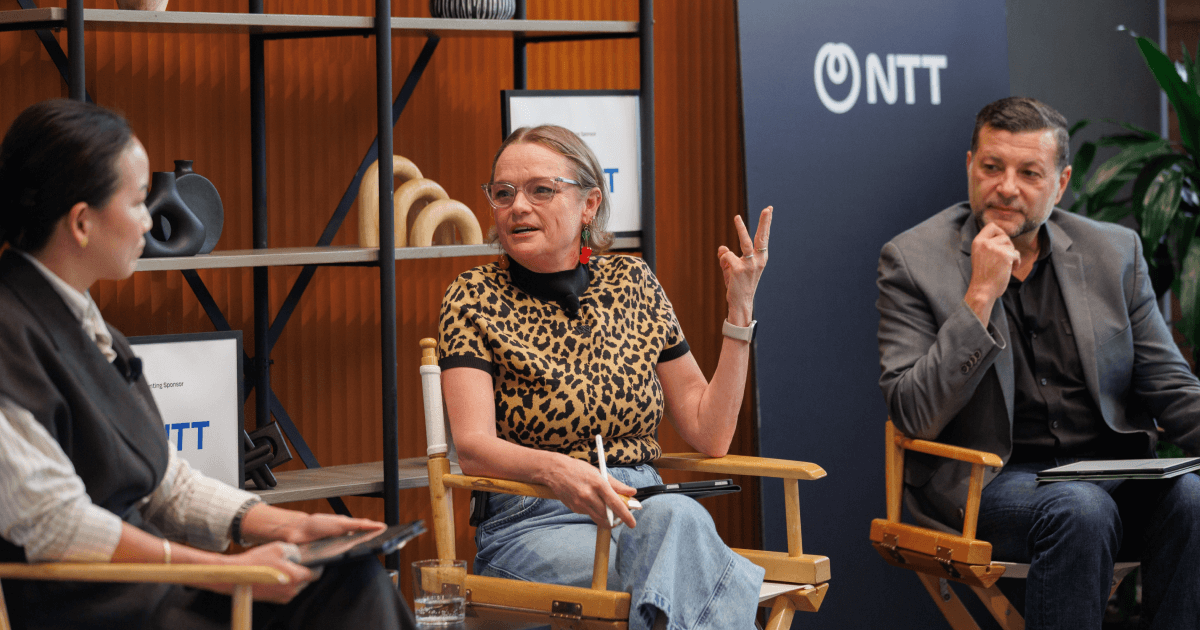De la ansiedad a la ventaja: cómo abordar los temores de IA de los empleados


A medida que la tecnología de IA ocupa un lugar central en las discusiones actuales sobre la transformación digital, queríamos profundizar en el lado humano que a menudo se pasa por alto de la implementación de IA. Administrar las preocupaciones de los empleados en torno a la IA es crucial para una adopción exitosa, por lo que Christen Bell, una psicóloga industrial especializada en el impacto de la IA en el lugar de trabajo, se unió a Clinton para desentrañar las complejas emociones, miedos y enfoques de gestión necesarios para la adopción responsable de la IA.
Comprender las raíces de la ansiedad de la IA
La rápida integración de la IA ha provocado una ansiedad generalizada entre los empleados, que a menudo no están seguros de su impacto en sus funciones y seguridad laboral. Bell explica que muchas organizaciones pasan por alto estas preocupaciones, lo que lleva a la resistencia y a la reducción de la confianza.
Bell señala que el miedo a la IA a menudo se deriva de la falta de información o la desinformación. Algunos empleados se sienten desinformados y temerosos de lo desconocido, mientras que otros sostienen conceptos erróneos influenciados por retratos mediáticos o narrativas sociales. Abordar estas variadas preocupaciones requiere un enfoque bien informado y empático por parte de los líderes.
Actitudes clave de IA en el lugar de trabajo
A través de su investigación, Bell ha identificado seis actitudes distintas hacia la IA, definidas por los niveles de comprensión y sentimiento hacia la tecnología. Tres de ellas son actitudes “anti-IA”:
- Desinformado y anti-IA: Al carecer de exposición a la IA, estos empleados se sienten amenazados, inseguros sobre su propósito y capacidades, lo que lleva a un mayor miedo.
- Desinformado y anti-IA: Este grupo cree entender la IA pero a menudo tiene creencias exageradas sobre su poder, influenciadas por las retratos mediáticas de la autonomía o conciencia de la IA.
- Informado y anti-IA: Aunque conocedor, este grupo sigue siendo escéptico o temeroso, expresando preocupaciones en torno a la ética, la privacidad y el posible desplazamiento laboral.
Construir confianza a través de la educación y la transparencia
La alfabetización y la transparencia en IA son estrategias clave para aliviar los temores. Educar a los empleados sobre cómo funcionan los modelos de IA, qué datos utilizan y cómo se generan los resultados ayuda a desmitificar la tecnología. Comenzar con la alfabetización de datos y avanzar hacia conceptos básicos de IA, como el aprendizaje automático y las redes neuronales, permite a los empleados comprender las limitaciones y los beneficios de la IA.
La transparencia es igualmente crucial. Todo el contenido generado por IA debe estar claramente etiquetado, evitando confusiones y generando confianza. Este etiquetado ayuda a los empleados a comprender las aplicaciones y limitaciones de la IA, contrarrestando el efecto “valle desconocido”, donde el contenido generado por IA puede resultar inquietante si no se divulga.
Creación de una estrategia de adopción de IA confiable
Para una adopción exitosa de IA, las empresas necesitan una administración proactiva del cambio. Bell recomienda evaluar el sentimiento de los empleados, crear programas de capacitación en IA y establecer canales de comunicación abiertos. Un líder conocedor y creíble debe impulsar el lanzamiento de IA, abordando las preocupaciones con empatía.
Los mecanismos de retroalimentación seguros, como los canales anónimos, son esenciales, ya que los empleados pueden dudar en plantear inquietudes en un foro público. Estos canales fomentan la transparencia y la inclusión, ayudando a los empleados a sentirse informados y apoyados.
Un enfoque de IA centrado en el ser humano
Los conocimientos de Bell subrayan la necesidad de una adopción de IA reflexiva y centrada en el ser humano. Al centrarse en la empatía, la educación y la transparencia, las empresas pueden fomentar una cultura de confianza, asegurando que la IA mejora en lugar de interrumpir el lugar de trabajo y, en última instancia, alinear la innovación de IA con una experiencia positiva para los empleados.
Como siempre, no olvides suscribirte a Catalizador dondequiera que consigas tus podcasts. Estrenamos un nuevo episodio todos los martes, repleto de consejos de expertos y conocimientos prácticos para crear experiencias digitales que mueven a millones.




